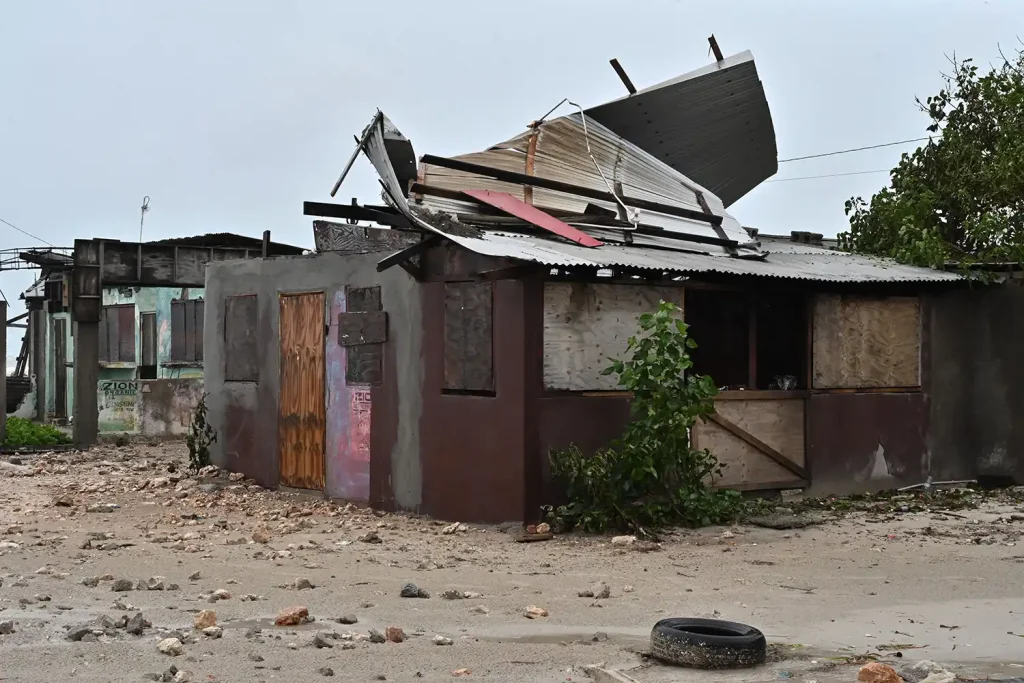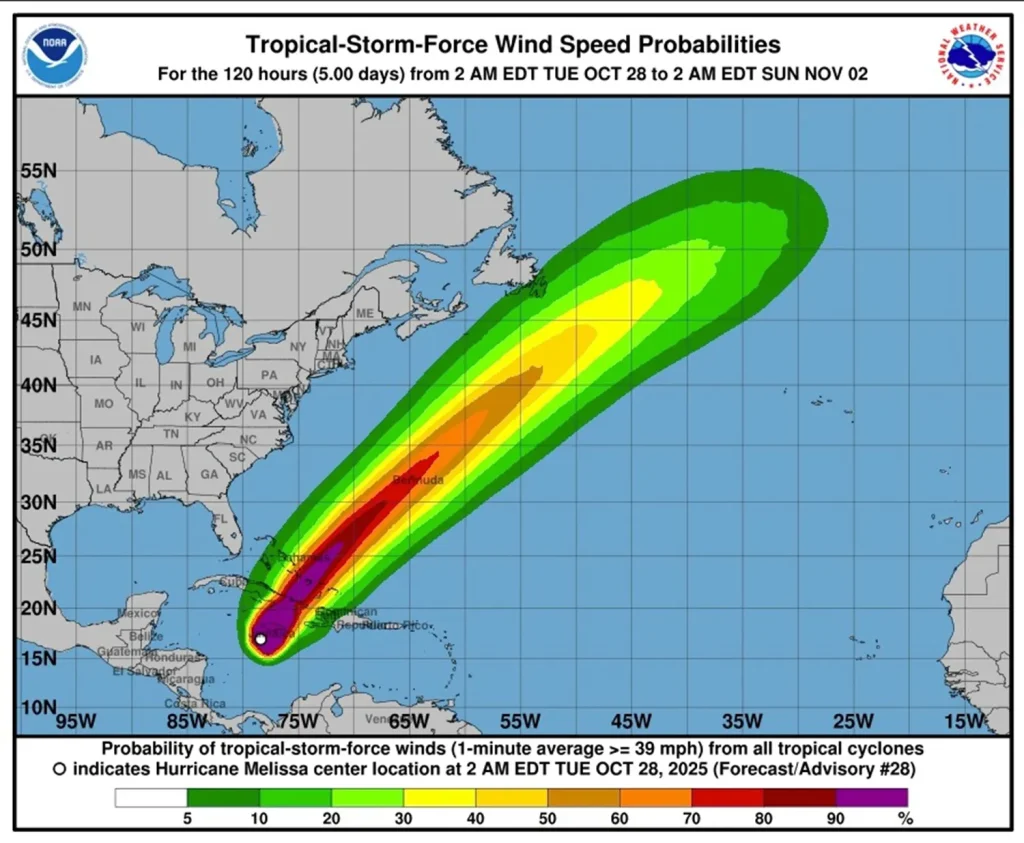At Least 7 Dead as Hurricane Melissa Intensifies Into ‘Storm of the Century’ Before Making Landfall in Jamaica
Hurricane Melissa is tearing through the northern Caribbean with deadly force, leaving at least seven people dead and many more bracing for what experts are calling one of the most powerful storms in recent memory. The Category 5 hurricane, described by meteorologists as “the storm of the century,” has already caused catastrophic damage across several islands and is now heading straight toward Jamaica.

Melissa formed earlier this week in the warm waters of the Atlantic and rapidly strengthened into a major hurricane, gaining intensity much faster than most weather models had predicted. By the time it reached the Caribbean, it had already unleashed destructive winds and torrential rain across the Dominican Republic, Haiti, and the Cayman Islands. The storm’s outer bands have caused widespread flooding, landslides, and power outages, cutting off entire communities from communication and essential resources.
According to local authorities, at least seven lives have been lost so far — victims of flash floods, falling debris, and collapsed structures. In some regions, rescuers have struggled to reach those in need due to washed-out roads and dangerous conditions. The Pan American Health Organization and the Red Cross are now coordinating emergency responses, preparing for what could become a full-scale humanitarian crisis if the storm continues its current path.

Satellite imagery shows Hurricane Melissa as a massive, perfectly formed cyclone — its eye sharply defined and its spiral bands stretching across hundreds of miles. Meteorologists warn that its winds, currently estimated at over 160 miles per hour, could cause catastrophic destruction when it makes direct landfall in Jamaica. The island’s Prime Minister has urged all residents in low-lying and coastal areas to evacuate immediately, emphasizing that this storm is unlike anything the nation has seen in decades.
Schools and businesses across Jamaica have been closed, and emergency shelters have opened in preparation for impact. Citizens have rushed to stock up on essentials such as food, water, and batteries, while airports have suspended all flights until conditions improve. The Jamaican Defence Force and National Disaster Office are on high alert, with search-and-rescue teams already positioned in multiple parishes.
Across the wider Caribbean, the fear is palpable. Many are recalling memories of past storms like Hurricane Gilbert and Hurricane Maria — disasters that left long scars on the region’s landscape and its people. For communities still rebuilding from previous hurricanes, the approach of another massive storm feels almost unbearable.

Meteorologists at the National Hurricane Center have called Hurricane Melissa a rare and dangerous event, fueled by record-breaking ocean temperatures and ideal atmospheric conditions. They warn that, after Jamaica, the storm is likely to continue northward toward Cuba and The Bahamas, potentially bringing widespread devastation to areas still recovering from earlier storms.
Global leaders and relief organizations have already begun offering support. The United Nations has pledged immediate aid, and neighboring countries are preparing to send disaster relief teams as soon as it is safe to travel. Meanwhile, social media has filled with emotional pleas for prayers, safety, and unity as the Caribbean faces what could be its hardest test in years.

For now, all eyes remain on Jamaica, where the people are preparing to face the full force of nature. As Hurricane Melissa barrels toward the island, the hope is that preparation, resilience, and international cooperation will help limit the loss and bring comfort to those already affected. The storm’s power is a sobering reminder of how fragile life can be in the face of nature’s might — and how deeply humanity depends on compassion and strength in the moments that test us most.



